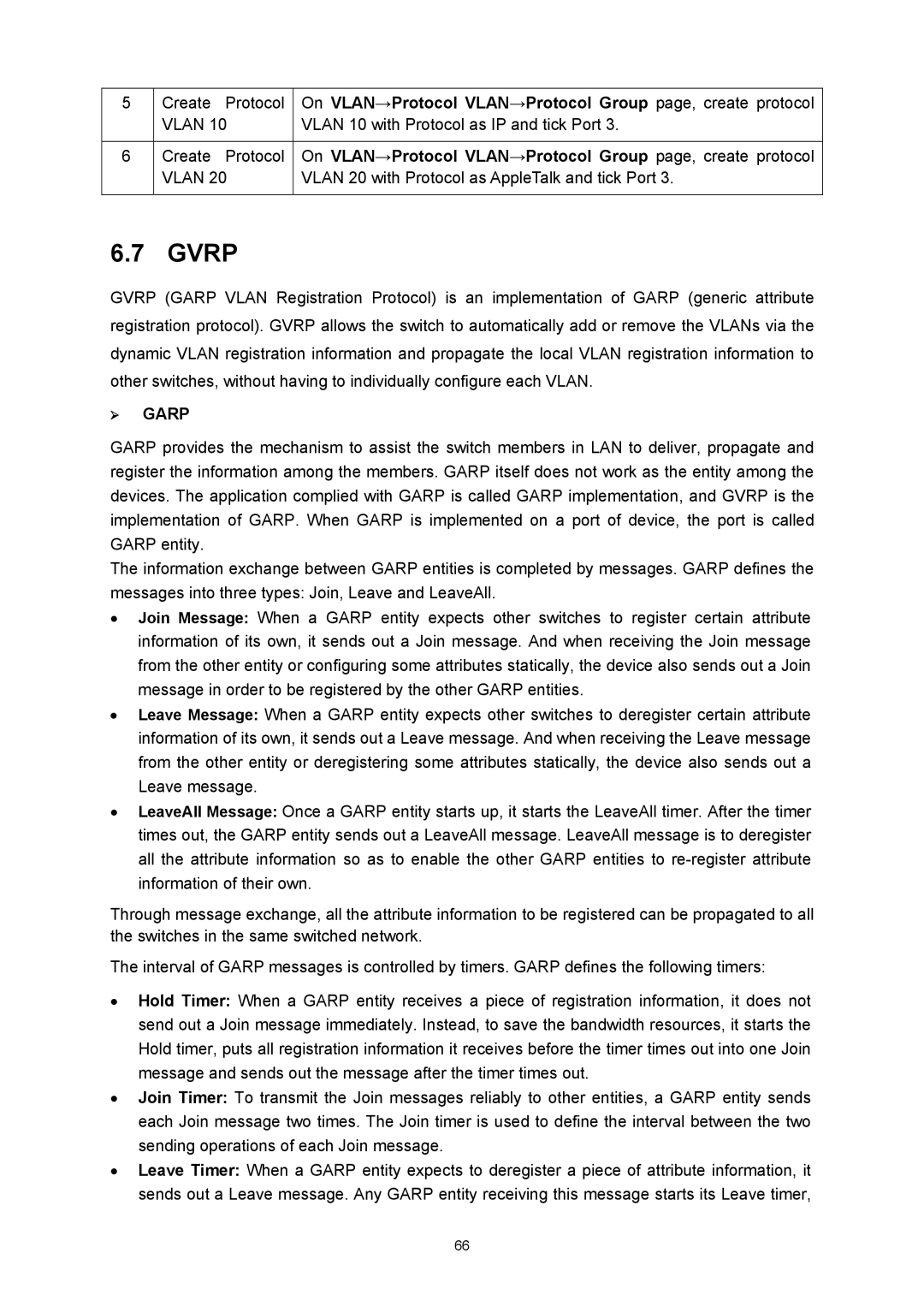5 | Create | Protocol | On VLAN→Protocol VLAN→Protocol Group page, create protocol |
| VLAN 10 | VLAN 10 with Protocol as IP and tick Port 3. | |
|
|
|
|
6 | Create | Protocol | On VLAN→Protocol VLAN→Protocol Group page, create protocol |
| VLAN 20 | VLAN 20 with Protocol as AppleTalk and tick Port 3. | |
|
|
|
|
6.7 GVRP
GVRP (GARP VLAN Registration Protocol) is an implementation of GARP (generic attribute registration protocol). GVRP allows the switch to automatically add or remove the VLANs via the dynamic VLAN registration information and propagate the local VLAN registration information to other switches, without having to individually configure each VLAN.
¾GARP
GARP provides the mechanism to assist the switch members in LAN to deliver, propagate and register the information among the members. GARP itself does not work as the entity among the devices. The application complied with GARP is called GARP implementation, and GVRP is the implementation of GARP. When GARP is implemented on a port of device, the port is called GARP entity.
The information exchange between GARP entities is completed by messages. GARP defines the messages into three types: Join, Leave and LeaveAll.
•Join Message: When a GARP entity expects other switches to register certain attribute information of its own, it sends out a Join message. And when receiving the Join message from the other entity or configuring some attributes statically, the device also sends out a Join message in order to be registered by the other GARP entities.
•Leave Message: When a GARP entity expects other switches to deregister certain attribute information of its own, it sends out a Leave message. And when receiving the Leave message from the other entity or deregistering some attributes statically, the device also sends out a Leave message.
•LeaveAll Message: Once a GARP entity starts up, it starts the LeaveAll timer. After the timer times out, the GARP entity sends out a LeaveAll message. LeaveAll message is to deregister all the attribute information so as to enable the other GARP entities to
Through message exchange, all the attribute information to be registered can be propagated to all the switches in the same switched network.
The interval of GARP messages is controlled by timers. GARP defines the following timers:
•Hold Timer: When a GARP entity receives a piece of registration information, it does not send out a Join message immediately. Instead, to save the bandwidth resources, it starts the Hold timer, puts all registration information it receives before the timer times out into one Join message and sends out the message after the timer times out.
•Join Timer: To transmit the Join messages reliably to other entities, a GARP entity sends each Join message two times. The Join timer is used to define the interval between the two sending operations of each Join message.
•Leave Timer: When a GARP entity expects to deregister a piece of attribute information, it sends out a Leave message. Any GARP entity receiving this message starts its Leave timer,
66
